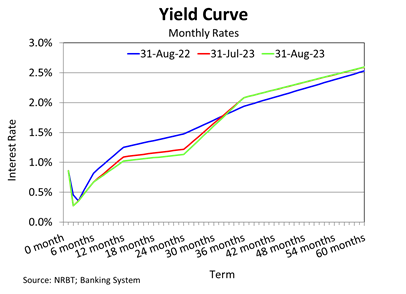Headline inflation driven by domestic price of kava
- Details
- Category: Economic Release
- Created: 01 September 2016
| Inflation June 2016 |
||||
| Jun 16 | May 16 | Apr 16 | Mar 16 | |
| Headline * | 0.1 | -1.0 | -0.9 | 1.4 |
| Domestic ^ | 2.1 | 1.9 | 2.8 | 5.2 |
| Imported ^ | -1.9 | -2.9 | -3.7 | -3.7 |
| Underlying * | 5.6 | 5.1 | 6.2 | 10.8 |
| * Year-ended growth | ||||
| ^ Percentage point contribution to year-ended growth | ||||
Headline inflation driven by domestic price of kava
Monthly headline inflation rose over June by 0.5%. This was driven by a rise in prices of imported fuel and Kava powder from the domestic basket components. In year ended terms, headline inflation was 0.1%. The rise in prices of domestic components were more than enough to offset a decline in the prices of imported goods.
According to Reuters, world oil prices have been steadily rising since the start of the year. On average, it costs around USD$49 per barrel, a position it was in last October. Despite being called an increase, it is still lower than the price of oil for June last year of USD$62 per barrel. The effects of the rise has seen a pick-up in both local electricity and fuel prices at the bowsers over the month.
The prices of imported components rose by 0.7% over the month of June. Rising global oil prices has meant that this cost would be passed on to consumers. The prices of petrol and diesel rose by 10 and 14 seniti from the previous month. There were still signs of a shortage of flour, this was evident in bakeries with less bread than normal being sold.
In year ended terms, the prices of imported goods fell, largely on the back of food and transportation (fuel) prices being cheaper than the same period last year.
The prices of domestic components increased by 0.2% over the month. The subgroup of Tobacco, Alcohol and Kava rose particularly sharply, prices of kava powder was the main driver. Kava prices have been slowly rising since February. The rise is being blamed on a shortage of supply due to the effects of a drought in 2014 affecting kava plantations. Kava takes between 2 to 3 years to grow before being harvested and processed into its powdered form. Kava powder normally sells for $25-30 pa'anga per kilo, it is now around $50-$70 pa'anga per kilo and it is expected to eventually hit $100 pa’anga per kilo in the near future.
In year ended terms, the prices of domestic components rose, largely on the back of higher kava prices and other miscellaneous goods and services.
The NRBT’s projection for inflation to remain at low levels for the next few months before peaking at 4.3% in November 2016 and slowing to 2.3% in the beginning of 2017. This forecast is based on the assumptions that the rise in prices for domestically produced goods such as food and kava will be more than enough to offset the decline in global fuel and food prices compared to a year ago. Developments in world oil and food prices pose a risk to this inflation forecast.
Download the full report: Inflation Rate - June 2016

